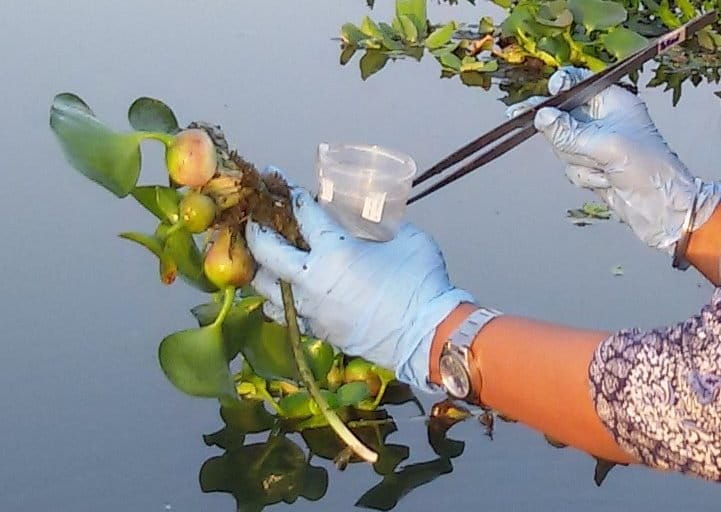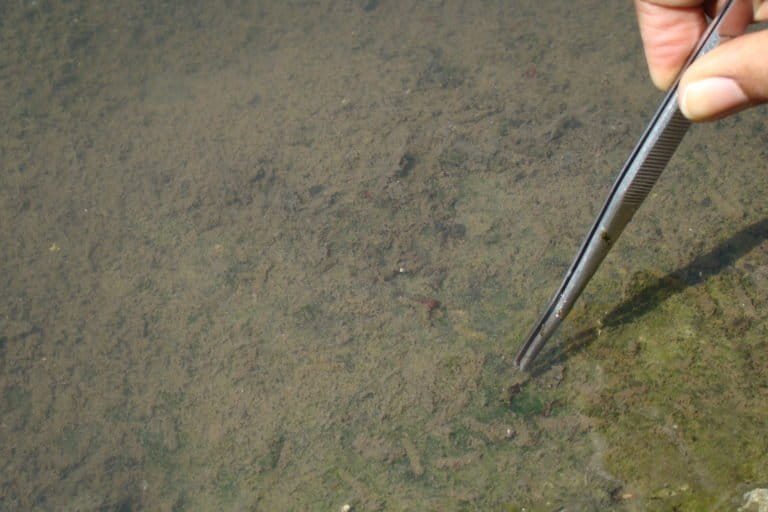- Certain species of chironomids (non-biting aquatic insects) harbour outbreak-causing strains of the bacterium Vibrio cholerae, a study has said.
- Monitoring the population of the aquatic insects may help to predict cholera outbreaks. Combined with water sampling, monitoring the insects may be an added advantage to the detection process.
- One of the advantages of using chironomids in research is their ability to survive even under toxic conditions, easy to collect and maintain under laboratory conditions.
Mosquito-like aquatic insects called chironomids are natural reservoirs of epidemic and pandemic-causing strains of cholera bacterium, a study by Indian and Israeli researchers has found. Monitoring and controlling the hardy chironomid populations in endemic areas could be used as a tool for predicting and controlling the devastating cholera outbreaks, they said.
Cholera is an acute diarrhoeal infection caused by eating or drinking food or water that is contaminated with the bacterium Vibrio cholerae. It remains a global threat to public health and is an indicator of inequity and lack of social development. It is estimated that there are 1.3 to 4.0 million cases of cholera, and 21 000 to 143 000 deaths worldwide, every year, due to the infection, according to the World Health Organisation.
There are many serogroups of V. cholerae, but only two – O1 and O139 – cause outbreaks. V. cholerae O1 has caused all recent outbreaks. V. cholerae O139 – first identified in Bangladesh in 1992 – caused outbreaks in the past, but recently has only been identified in sporadic cases. It has never been identified outside Asia. There is no difference in the illness caused by the two serogroups.
The current cholera pandemic – the seventh that has been recorded – has been ongoing since 1961. It is the world’s longest-running pandemic.
Twenty years ago Israeli researchers Malka Halpern and Meir Broza reported that chironomids, an aquatic insect group that is closely related to mosquitoes but do not bite, are natural reservoirs of Vibrio cholerae non O1/O139, facilitating its survival and multiplication in freshwater bodies.
“So far, the outbreak-causing O1 and O139 serogroups were not identified among V. cholerae isolates in this habitat. The current study has provided evidence for the first time that nine different chironomid species from India and Israel harbor V. cholerae O1 and possess the cholera-toxin gene,” Malka Halpern, Associate Professor, The Faculty of Natural Sciences, University of Haifa, told Mongabay-India.
“Only two chironomid species from India, Chironomus ramosus and Kiefferulus calligaster, harbor the toxigenic serogroup O139. The limited distribution of these two chironomid species in the Indian subcontinent and South Asia may be one of the explanations for the limited distribution of O139 serogroup,” she said.
Cholera is an endemic disease in India. In the Bengal Delta region, cholera epidemics show biannual peaks (March-May and September-November), and the mechanisms behind these seasonal dual peaks are not fully understood.
In a yearly survey in Israel, it was found that chironomid populations and V. cholerae in their egg masses demonstrated peaks twice a year. “If such a connection will be further validated for chironomid populations and the pathogenic serogroups of V. cholerae (O1/O139) in endemic areas of the disease, monitoring chironomid population levels may be used as a tool for predicting cholera outbreaks,” Halpern added.
Chironomids undergo a complete metamorphosis comprising the aquatic egg, larval, and pupal stages, while the terrestrial adults emerge into the air. Females lay egg masses on the water’s edge. Each egg mass contains hundreds of eggs.

All four life stages of chironomids were sampled from two rivers, and a laboratory culture in Pune, India, and a pond in Israel. “In total, we analysed 223 chironomid samples. The presence of V. cholerae O1/O139 serogroups and cholera toxin genes were verified using molecular tools. We did not culture V. cholerae strains from the insects, but instead, we used methods that enabled the identification of V. cholerae genes directly from the DNA that was extracted from the insect samples.”
The current observations should be followed up by studying the seasonal abundance of chironomid midges together with finding evidence for the presence of toxigenic V. cholerae strains in chironomid midges, and the overlapping with the peaks of cholera outbreaks in regions of epidemics, added Halpern.
Canaries in coal mines
Ramamurthy, senior scientist, ICMR-National Institute of Cholera and Enteric Diseases, who was not associated with the study, added that monitoring population of midges for V. cholerae in addition to water sampling lends an advantage to the detection process. Cholera outbreaks are always associated with the consumption of contaminated drinking water, poor hygiene, and sanitation.
And, conventionally, total and faecal coliforms serve as indicators of contaminated water. Any biological tool that serves as an indicator of pollution is useful in the epidemiology of cholera and other diseases.
“The larval form of chironomids is abundant in aquatic environments. One of the advantages of using chironomids in research is their ability to survive even under toxic conditions, easy to collect and maintain under laboratory conditions. V. cholerae will be abundant on these chironomids, and hence in addition to water sampling, testing this midge will be an added advantage in detecting the pathogen,” Ramamurthy told Mongabay-India.
“Several oligosaccharides present in the mucin of chironomids act as a common nutrient for V. cholerae and other bacteria. However, more research is needed on factors that support the survival of V. cholerae and other waterborne pathogens on chironomids.”
Ramamurthy elaborated further on the environmental linkages of cholera.
“V. cholerae is a native organism in coastal environments and freshwater bodies. For its survival, this organism depends on certain species of cyanobacteria and several animal communities such as zooplankton, chironomids, crabs, fishes and soft-shelled turtles in the aquatic reservoir. In several findings, fish-eating birds such as cormorants, ducks, etc., act as a source in the spread of V. cholerae by consuming infected fishes. The chitinous outer covering of many of these animal species serves as a nutrient for V. cholerae,” he added.
Chironomid midges evolved during the Jurassic-Cretaceous period (200 million years ago); these ancestral group of dipteran insects withstands hostile environmental stress conditions. At Savitribai Phule Pune University’s Stress Biology Research Group, study co-author BB Nath delves deep into Chironomids’ response to and tolerance of stress factors such as desiccation, radiation, hypoxia as well as temperature-induced stress.
Nath told Mongabay-India: “The present study has added Chironomid midges to a long list of animals that are reservoirs for pathogens. We should now look at the microbial ecology of Chironomids.”

Cholera hotspots in India
During the 19th century, cholera spread across the world from its original reservoir in the Ganges delta in India. Six subsequent pandemics killed millions of people across all continents. The current (seventh) pandemic started in South Asia in 1961, and reached Africa in 1971 and the Americas in 1991. Cholera is now endemic in many countries.
A 2017 paper that identified cholera hotspots in India states that it is a major public health problem in India, but particularly in the states of West Bengal, Karnataka, Punjab, and areas of Himachal Pradesh adjoining Punjab.
In addition to West Bengal, most of the districts in Karnataka were identified as cholera hotspots. This increased risk in Karnataka may be related to an acute shortage of safe water and poor environmental sanitation during pre-monsoon and early monsoon seasons. There are also several other pockets of hotspots in different regions, such as Rajasthan and Chhattisgarh, probably due to poor environmental hygiene, lack of access to potable water, and risk-posing lifestyles (e.g. not washing hands properly before meal, eating street food, etc.).
The model applied in the study suggests that cholera is occurring not only in places that report cases but is also highly likely to be occurring in several other places such as Bihar, Madhya Pradesh, Uttar Pradesh, and Odisha. The study underscored that families living in rural areas of districts with more cities are at higher risk, perhaps because the resources in these districts are allocated to the urban areas, neglecting the rural areas of the district.

Banner image: A Chironomid (Chironomus plumosus). Certain Chironomids are hideouts of outbreak causing strains of the cholera bacterium. Photo by Entomart/Wikimedia Commons.
